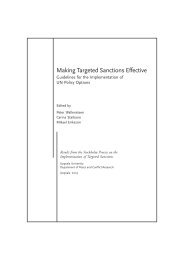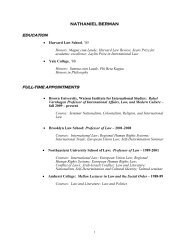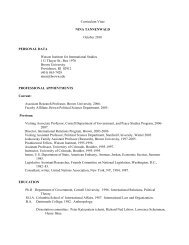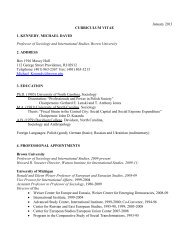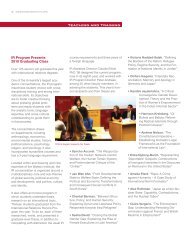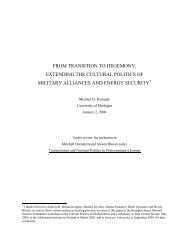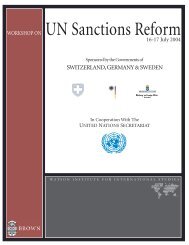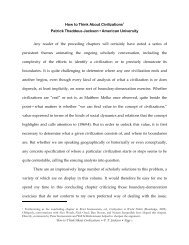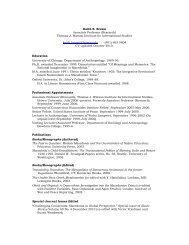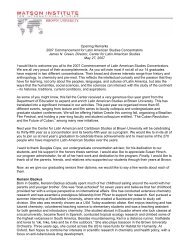op 18 front pages-converted - The Watson Institute for International ...
op 18 front pages-converted - The Watson Institute for International ...
op 18 front pages-converted - The Watson Institute for International ...
Create successful ePaper yourself
Turn your PDF publications into a flip-book with our unique Google optimized e-Paper software.
ANNEX 2<br />
CHRONOLOGY OF MAJOR EVENTS<br />
<strong>The</strong> humanitarian crisis was triggered by the dissolution<br />
of Yugoslavia, comprised since 19<strong>18</strong> of six republics and two<br />
self-governing provinces. Key political events in 1991 included<br />
declarations of independence by Croatia and Slovenia<br />
(June 25) and their <strong>for</strong>mal secession (October 8); proclamation<br />
of the Serbian Autonomous Region of Krajina within Croatia<br />
(March 16), later expanded and consolidated as the Serbian<br />
Republic of Krajina (December 19); and proclamation of an<br />
Assembly of the Serbian Nation of Bosnia-Herzegovina (October<br />
24). Bosnia-Herzegovina proclaimed independence the<br />
following March.<br />
Political decisions led to military con<strong>front</strong>ations. From<br />
late 1991 to 1992, the major fighting took place in Croatia<br />
between Serbs and Croats; during 1992 and 1993, the principal<br />
military action pitted Serbs from Bosnia and the Federal<br />
Republic of Serbia against the Bosnian army. Fighting intensified<br />
in the spring of 1993 in eastern Bosnia when, with an eye<br />
to territorial shifts resulting from peace negotiations in Geneva,<br />
each protagonist sought to consolidate its position. Later in the<br />
year, Croatians from Bosnia and Herzegovina and from Croatia<br />
teamed up to fight against the Bosnian army in central Bosnia.<br />
In 1991, the U.N. joined negotiations being pursued by the<br />
Eur<strong>op</strong>ean Community through the appointment in October of<br />
a Special Representative of the Secretary-General, Cyrus Vance.<br />
At year's end, Vance negotiated a cease-fire in the war in<br />
Croatia in January and an agreement to set up U.N. Protected<br />
Areas in Serb-occupied Croatia and station tro<strong>op</strong>s there. He<br />
later joined with Eur<strong>op</strong>ean Community representative David<br />
Owen, who continued an EC initiative begun under Lord<br />
Carrington, to arrange <strong>for</strong> the deployment of U.N. tro<strong>op</strong>s in<br />
Bosnia and pr<strong>op</strong>ose the creation of ten ethnically diverse<br />
regions within a loose central government framework. Vance<br />
was replaced in May 1993 by Norwegian Foreign Minister<br />
Thorvald Stoltenberg, who with Lord Owen pr<strong>op</strong>osed a division<br />
of Bosnia and Herzegovina into three regions, largely<br />
along ethnic lines.<br />
157



